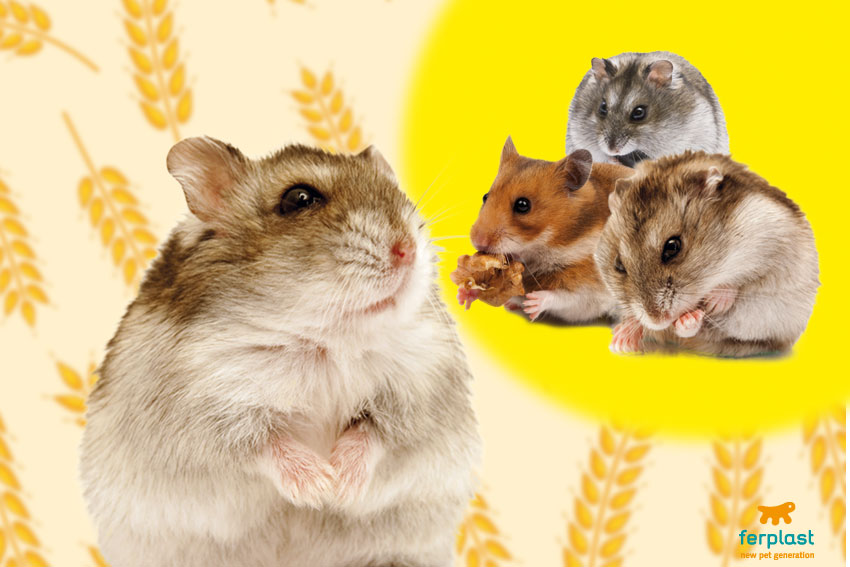Fundamental Traits of Hamster Breeds
Hamsters are popular pets that come in a variety of breeds, each possessing unique characteristics and traits. Understanding these traits is essential for anyone considering a hamster as a pet, fostering a bond, and ensuring the correct care. In this article, we will explore the fundamental traits of different hamster breeds, detailing their physical appearances, temperaments, and care requirements.
Physical Characteristics of Hamster Breeds
Each hamster breed exhibits distinct physical characteristics, which can help in their identification and care. For instance, the **Syrian hamster**, known for its larger size, often weighs between 5 to 7 ounces and has a longer lifespan in captivity. In contrast, dwarf hamsters, such as the **Roborovski** and **Campbell’s**, are much smaller, usually weighing just 1 to 2 ounces. The color and coat can also vary significantly among different hamster breeds. The **Syrian hamster** can have a variety of fur types, including long-haired and short-haired, while **Russian Dwarf** hamsters often have a sandy brown or grey coat.

Syrian Hamster Characteristics
The **Syrian hamster** is the most common pet hamster. It has a robust build, with males typically larger than females. The fur can vary from golden to black, including banded patterns. Known for their friendly nature, they are generally solitary creatures and require ample space in their habitats to thrive. It’s important to provide them with a spacious cage, plenty of bedding, and enrichment activities to keep them stimulated.
Dwarf Hamster Traits
Dwarf hamsters, like the **Winter White** and **Campbell’s** hamsters, are smaller and less aggressive than their larger counterparts. They have different color variations and may even change their coats seasonally—this is particularly noticeable in the **Winter White**, which turns white in colder months. These hamsters are social and can sometimes be kept in pairs or small groups under proper conditions, but introducing new hamsters should be done with caution to avoid territorial disputes.
Behavioral Traits of Hamster Breeds
Behavior also varies significantly among hamster breeds. **Syrian hamsters** tend to have distinct temperaments, often displaying curiosity and playfulness. They enjoy interacting with their owners, making them a great choice for families. On the other hand, dwarf hamsters like the **Roborovski** are known for their quickness and shyness, preferring to observe rather than directly interact. Understanding these behavioral traits helps in determining which breed might be the best fit for your lifestyle.
Friendly and Active Hamsters
<p**Many owners find that the **Syrian hamster** can be very friendly and interactive. They can easily be hand-tamed with patience and consistent handling. This breed often enjoys playtime outside of its cage in a safe and supervised environment. Activities like running through tunnels or engaging with toys can significantly enhance their happiness and well-being.
Shy and Independent Hamsters
In contrast, dwarf hamsters tend to be more independent, often preferring to explore their surroundings alone. The **Roborovski** hamster, for instance, is incredibly agile and loves to run on the wheel. While they might not seek out affection as openly as a **Syrian**, they can still become accustomed to handling through structured interactions over time. It’s crucial for owners to respect their need for personal space while providing stimulation through play and exploration.
Care Requirements for Different Hamster Breeds
Caring for hamsters involves understanding the specific needs of each breed. General care includes providing a clean cage, fresh food, and regular exercise, but there are nuances depending on the breed. For example, **Syrian hamsters** thrive in larger habitats due to their solitary nature and territorial instincts. Adequate hiding spaces and tunnels can make them feel secure and content.
Cage Setup and Environment
Ensure that the cage setup is breed-appropriate. **Dwarf hamsters**, like the **Campbell’s**, benefit from smaller, multi-level habitats that allow them to engage in climbing and exploration. They also require a diet rich in seeds, pellets, and fresh vegetables to maintain their health and vitality. Hydration is essential, so always provide fresh water and change it regularly.
Nutrition for Optimal Health
Feeding routines matter significantly across hamster breeds. **Syrian hamsters** can eat a varied diet while ensuring that the protein intake is balanced. In contrast, **dwarf hamsters** may require lower protein levels in their diet to avoid health complications like wet tail. Regularly monitor their dietary needs and adjust their meals based on age and health. A good quality hamster mix supplemented with occasional treats ensures proper nutrition.
Conclusion: Choosing the Right Hamster Breed
When considering a hamster as a pet, understanding the fundamental traits of different breeds is crucial. From the larger and more social **Syrian hamster** to the shy and agile **Dwarf hamster**, every breed has unique characteristics and care needs. This knowledge not only aids in choosing the right breed for you but also fosters a healthy and happy relationship with your new furry friend. Remember, regardless of the breed, proper care, and attention will lead to a fulfilling experience for both you and your hamster.
Key Takeaways
- Hamsters come in various breeds, each with different physical and behavioral traits.
- Syrian hamsters are friendly and known for their larger size, while dwarf hamsters are smaller and more independent.
- Caring for hamsters requires understanding their specific habitat needs and nutritional requirements.
FAQ
1. How do I choose the right hamster breed for my family?
When selecting a hamster breed, consider your family’s needs. **Syrian hamsters** may be better suited for homes with children due to their friendly nature, while **dwarf hamsters** might appeal to those interested in watching agile, burrowing behavior. Always research the breed in depth to understand its personality, care requirements, and compatibility with your lifestyle.
2. What is the lifespan of different hamster breeds?
On average, **Syrian hamsters** live around 2 to 3 years, while dwarf hamsters can also reach similar lifespans but may vary slightly depending on the breed. Factors like diet, habitats, and healthcare can influence their longevity, so providing good care is essential.
3. Can hamsters be housed together?
Housing hamsters together can be tricky. Although some dwarf hamsters may cohabit peacefully, such as **Campbell’s**, it’s crucial to monitor their behavior closely. **Syrian hamsters**, however, are solitary animals and should never be housed together as they can become territorial and aggressive.
4. What kind of diet do hamsters need?
Hamsters thrive on a balanced diet comprising quality pellets, seeds, and occasional fresh fruits and vegetables. **Syrian hamsters** may require different proportions than dwarf hamsters, who benefit from managed protein levels in their diet to avoid complications. Always consult your veterinarian for specific dietary recommendations.
5. How do I create a suitable habitat for my hamster?
A suitable habitat for a hamster includes a spacious cage with plenty of bedding, hiding spots, and enrichment toys. For **Syrian hamsters**, a single large space is ideal, while **dwarf hamsters** enjoy multi-level structures equipped with tunnels for exploration. Offer them areas to climb and burrow for optimal comfort and happiness.
